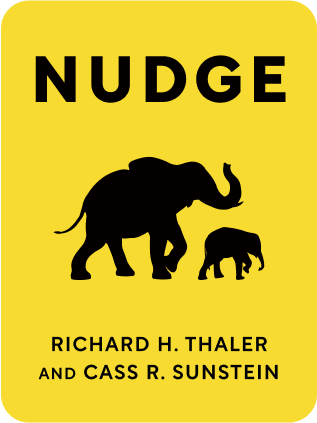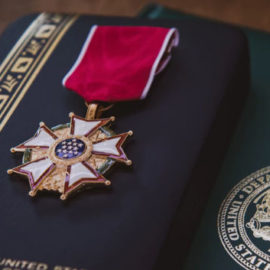

This article is an excerpt from the Shortform summary of "Nudge" by Richard H. Thaler and Cass R. Sunstein. Shortform has the world's best summaries of books you should be reading.
Like this article? Sign up for a free trial here .
What are some different types of nudges? How do nudges vary?
There are many different types of nudges. Depending on the need, they can be applied in a variety of settings.
Read more about the types of nudges.
Types of Nudges: College Attendance
A college degree has never been more essential than in today’s job market, yet 30% of US high school graduates choose to forego higher education. But what if, to earn your high school diploma, you had to apply to college?
This was one of the types of nudges employed by San Marcos High School in Texas in an effort to increase Latino student enrollment in Texas colleges. The strategy was this: make an application to nearby Austin Community College (ACC) a requisite for graduation, and have ACC admissions officers help guide students through the application process. (The admissions officers recognized the importance of “salience” (see Chapter 5): rather than preach to the students about “learning for its own sake” or the “life of the mind,” they told them that a college degree could be the difference between driving a KIA or a Mercedes-Benz.)
The effort paid off: In one year, San Marcos High School graduates attending college rose by 11%.
More Nudges
Of course, the types of nudges described in the preceding chapters just scratch the surface of what’s possible with informed choice architecture. Here are some additional types of nudges that further illustrate what’s possible through the power of a nudge:
- Give More Tomorrow: Akin to a “Save More Tomorrow” program, “Give More Tomorrow” invites donors to charitable organizations to increase the amount of their donation annually. The increase would be calculated and charged automatically, and donors would only have to make a telephone call or visit a website to disenroll. Human inertia/status quo bias would favor the charities. This is one of the types of nudges that uses default choices.
- Automatic Tax Returns: Imagine if a pre-filled tax return was sent right to your door! Already implemented in Nordic countries like Denmark and Finland, automatic tax returns are completed by the government and sent to taxpayers for approval. Economist Austan Goolsbee estimated that automatic tax returns would save Americans 225 million hours of tax preparation and over $2 billion in fees. It would make auditors’ lives easier, too. This is another one of the types of nudges that uses a default choice.
- A “Quit Smoking” Account: Piloted in the Philippines, smoking-cessation accounts can be opened with as little as one dollar and commit smokers to depositing the money they otherwise would have spent on cigarettes every week. If, at the end of six months, the depositor tests positive for nicotine, the money in the account is donated to charity; if he or she manages to get through the six months without smoking, the money is returned. This is one of the types of nudges that use incentives.
- Destiny Health Plan: Available in certain US states, the Destiny Health Plan rewards enrollees with points when they participate in certain healthful activities—for example, attending a fitness class—or meet certain health goals, say, lowering their blood pressure. These points can be traded in for plane tickets, hotel stays, and other rewards.
- Dollar-a-Day Programs: “Dollar-a-Day” programs nudge people toward more beneficial habits by paying them a small amount for every day they refrain from a harmful behavior. For example, officials in Greensboro, North Carolina, developed a program to curb teen pregnancy: They gave teenagers who had already had a baby a dollar for every day they weren’t pregnant.
- A Civility Warning: In the age of social media and the “hot take,” people are all too susceptible to firing off an angry tweet or text in a fit of passion. The “civility warning” would recognize the sentiment of the message you aim to send and prompt you with a question: “Warning: This appears to be an uncivil message. Do you really wish to send it?” An even stronger iteration of this nudge would force users to wait a day before sending the uncivil message.
- Procrastinator’s Clock: This watch and/or clock runs up to fifteen minutes fast, but it speeds up and slows down at random (so users can never game it).

———End of Preview———
Like what you just read? Read the rest of the world's best summary of Richard H. Thaler and Cass R. Sunstein's "Nudge" at Shortform .
Here's what you'll find in our full Nudge summary :
- Why subtle changes, like switching the order of two choices, can dramatically change your response
- How to increase the organ donation rate by over 50% through one simple change
- The best way for society to balance individual freedom with social welfare






